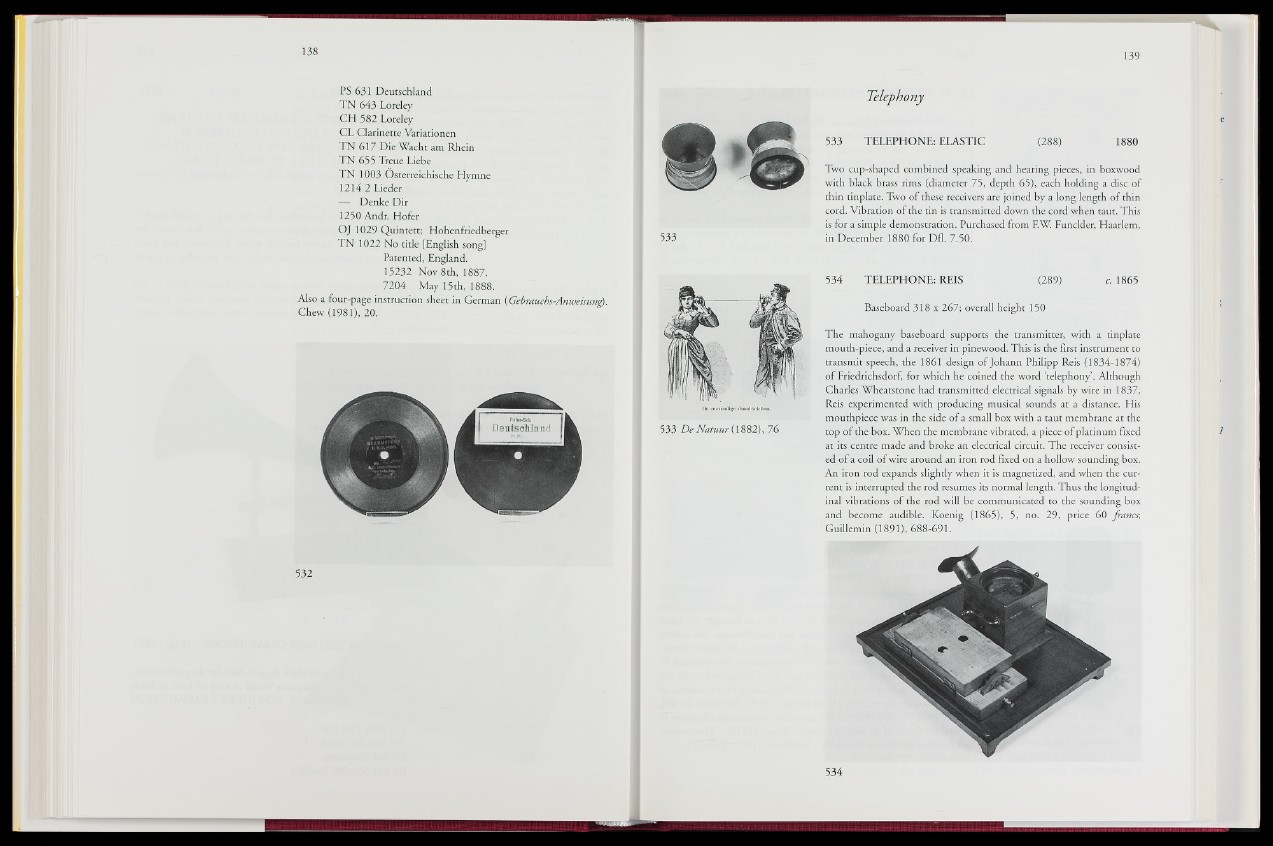
PS 631 Deutschland
TN 643 Loreley
CH 582 Loreley
CL Clarinette Variationen
TN 617 Die Wacht am Rhein
TN 655 Treue Liebe
TN 1003 Österreichische Hymne
1214 2 Lieder
— Denke Dir
1250 Andr. Hofer
OJ 1029 Quintett; Hohenfriedberger
TN 1022 No title [English song]
Patented, England.
15232 Nov 8th, 1887/
7204 May 15th, 1888.
Also a four-page instruction sheet in German fGebrauchs-Anweisung).
Chew (1981), 20.
532
Telephony
e
533 TELEPHONE: ELASTIC (288) 1880
Two cup-shaped combined speaking and hearing pieces, in boxwood
with black brass rims (diameter 75, depth 65), each holding a disc of
thin tinplate. Two of these receivers are joined by a long length of thin
cord. Vibration of the tin is transmitted down the cord when taut. This
is for a simple demonstration. Purchased from EW. Funckler, Haarlem,
in December 1880 for Dfl. 7.50.
534 TELEPHONE: REIS (289) c. 1865
Baseboard 318 x 267; overall height 150
The mahogany baseboard supports the transmitter, with a tinplate
mouth-piece, and a receiver in pinewood. This is the first instrument to
transmit speech, the 1861 design of Johann Philipp Reis (1834-1874)
of Friedrichsdorf, for which he coined the word ‘telephony. Although
Charles Wheatstone had transmitted electrical signals by wire in 1837,
Reis experimented with producing musical sounds at a distance. His
mouthpiece was in the side of a small box with a taut membrane at the
top of the box. When the membrane vibrated, a piece of platinum fixed 1
at its centre made and broke an electrical circuit. The receiver consisted
of a coil of wire around an iron rod fixed on a hollow sounding box.
An iron rod expands slightly when it is magnetized, and when the current
is interrupted the rod resumes its normal length. Thus the longitudinal
vibrations of the rod will be communicated to the sounding box
and become audible. Koenig (1865), 5, no. 29, price 60 francs',
Guillemin (1891), 688-691.